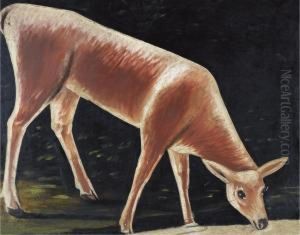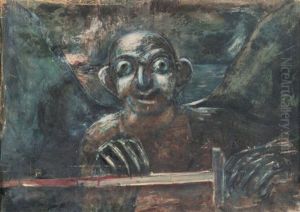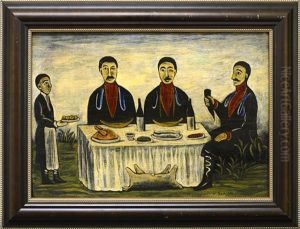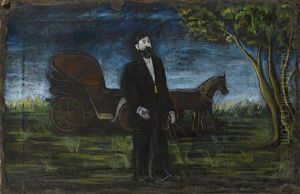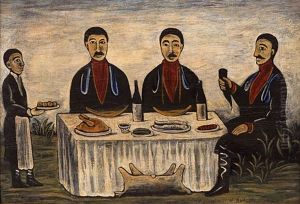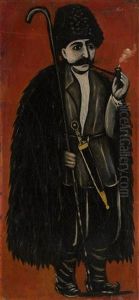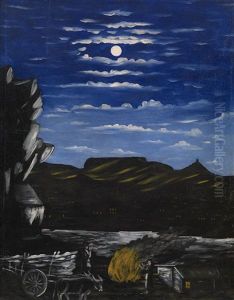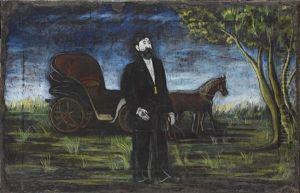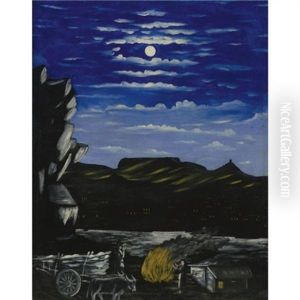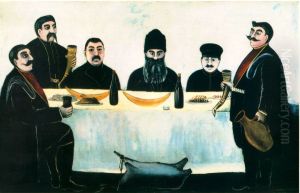Niko Pirosmani Paintings
Niko Pirosmani, also known as Nikala (a diminutive of Nikoloz), was a self-taught Georgian primitivist painter who is now considered a key figure in Georgian folk art. Born in the village of Mirzaani, in the Kakheti region of Georgia, which was then part of the Russian Empire, Pirosmani was the son of a peasant vine grower. Orphaned at a young age, he and his two sisters were raised by their relatives. His formal education was limited, and he worked a variety of jobs to support himself, including for a time as a train conductor.
Despite his lack of formal training, Pirosmani was driven by a deep passion for art. He taught himself to paint, primarily using oil on cardboard because of the limited resources at his disposal. His subjects often included scenes of rural life, social gatherings, animals, and town life. He also painted a number of portraits and signboards for businesses. Pirosmani's style was unique and idiosyncratic, characterized by the use of bold, black contours and a simplified approach to form and color that would later be recognized as characteristic of naïve art.
Pirosmani lived a life of poverty and remained relatively unknown during his lifetime, often trading his paintings for food or a place to sleep. It was only after his death in Tbilisi in 1918, and particularly in the mid-20th century, that his work gained recognition. His paintings eventually attracted attention for their historical and cultural value as well as their artistic merit, leading to a reassessment of his place in the art world. In 1930, the first monograph on Pirosmani was published, and by the latter half of the 20th century, he had been embraced as a national symbol of Georgian art.
Today, Pirosmani’s works are celebrated for their directness, emotional resonance, and the insight they provide into Georgian life at the turn of the 20th century. His legacy is preserved in the Pirosmani Museum in Mirzaani, and he is commemorated in Georgia by Pirosmani Day. Internationally, his works have been exhibited in many countries, and he has been the subject of various books, scholarly articles, and documentaries, securing his reputation as a significant figure in the outsider art tradition.
